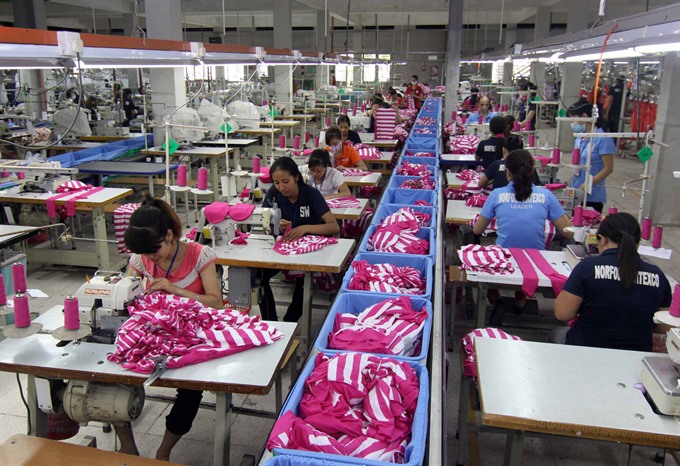 Economy
Economy

The Ministry of Industry and Trade has mapped out next year’s development plan for the industrial sector and forecast an 8 per cent rise in industrial production, against this year.
 |
| Work in progress at a factory belonging to the Norfolk Joint Stock Company in Ha Nam Province’s Dong Van 1 Industrial Zone. The Ministry of Industry and Trade has set a goal of 8 per cent growth for industrial production next year. — VNA/VNS Photo Vu Sinh |
HÀ NỘI – The Ministry of Industry and Trade (MoIT) has mapped out next year’s development plan for the industrial sector and forecast an 8 per cent rise in industrial production, against this year.
In its report on the direction and solutions for the industrial sector, the ministry has also forecast a 6-7 per cent increase in exports in 2017. The proportion of trade deficit against total trade turnover will be maintained at less than 5 per cent.
The total revenue from retail sales of goods and services is also expected to rise by around 10 per cent next year.
The ministry said its calculations are based on research reports on global economic growth in 2017, announced by international organisations to date. Global economic growth is expected to rise next year, depending on the movements of financial, crude oil and securities markets as well as volatility in some countries.
The International Monetary Fund (IMF) and the World Bank (WB) have forecast that the world economy will rise by 3.5 per cent and 3.1 per cent respectively in 2017, against 3.2 per cent and 2.9 per cent in 2016.
For Việt Nam’s power industry, the ministry has forecast that the industry will produce 99 billion kWh of electricity and will have to buy an additional 179.8 billion kWh in 2017, up roughly by 13 per cent against this year.
According to the ministry, after gaining a significant growth in the mining and lighting industries over the past few years, 2017 will be negative for them.
The oil and gas sector is expected to exploit only around 14.8 million tonnes of crude oil next year, down 12.9 per cent against this year. However, the output of gas will rise by 10.8 per cent to 11.3 billion cu m.
The output of the coal industry is expected to remain unchanged at 38.3 million tonnes in 2017. However, this sector, as well as the engineering industry, will be affected because of low prices globally.
Among the heavy industries, the steel sector is expected to have an output of 5.6 million tonnes of unprocessed steel, up 16.6 per cent, while rolled steel is forecast to rise by 18 per cent to 5.84 million tonnes.
Forecast for the fertiliser industry is optimistic, with there being enough output to meet not just domestic demands but also for exports. The output of urea fertiliser will inch up by 2.2 per cent to 2.01 million tonnes, while NPK fertiliser will rise 2.4 per cent to 2.67 million tonnes.
The textile-garment and footwear industries are also expected to have more opportunities in 2017, as a number of new free trade agreements will take effect. The ministry is, however, concerned that domestic small- and medium-sized firms will face more challenges at the same time.
Fierce competition has also been forecast for the beer-alcohol-beverage industry owing to the presence of more foreign brands in the country. The industry’s output next year is estimated to be 3.92 billion litres, up 8.2 per cent against 2016. - VNS




